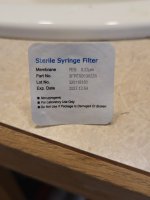When I read a test report for let’s say 15mg Tirz and it says 99.8 percent Tirz at 16.58mg
I understand that it is 16.5 strength not 15 and it is 99.8 % tirz
Is that all anyone ever sees from paying for a test?
How do you know if there are no heavy metals or other contaminants?
Or is it simply the 99.8 is good to go and no worries?
This is a common mistake.
First the easy part. It's not 16.5 "strength". There are 16.5mg of tirz in the vial. That's a small difference but kind of important.
Second, Purity is the most misunderstood thing on these tests and the best way to understand it is forget that it's called purity because its a chemist's definition that I wish they would use a different word.
When you order a lab test on the peptides you are getting an HPLC test. This is a very narrow test that is specific to the peptide in question. It does pick up a small handfull of other things but this is mostly a side effect. Those things are marked at a specific spot on the graph during the test. Everything that shows up gets classified as either the target peptide, known ingredients, and unknown ingredients. Purity is then (target peptide)/(total things found - known ingrediants)
For example lets say a vial has tirz/suger/a good preservative/a bad cleaning agent.
Lets say the HPLC test shows the tirz and sugar. Every vial of tirz has this so Jano knows what this looks like. Let's say this good preservative is new and shows up in the HPLC. Jano doesn't know what it is, he asks the customer first if they know what it is and if they want to pay to identify it. If it gets identified and it's commonly used in other peptides Jano adds it to the list of known ingredients and it never shows up in any test report. Otherwise he excludes it from the purity calculation but identifies it in the notes of the report. Most of the unknown ingrediants are actually just decomposed tirz.
Now the bad cleaning agent never even shows up in the HPLC test. It has no effect on the purity whatsoever. Most possibilities fall into this category.
How do you know if there are other contaminants in the vial? You can pay jano to test for almost anything you want, but every test only looks for a specific thing and each one costs money. (Fortunately we know enough about the peptide process that heavy metals have no reason to ever be introduced into the process and they have been tested for sporadically and never come back positive)

